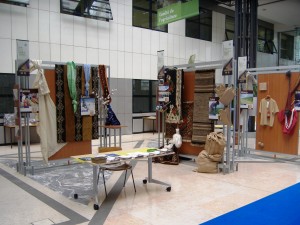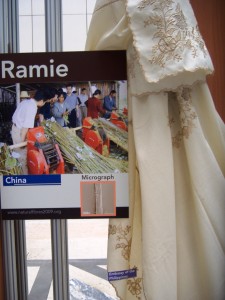- Vandana Shiva on Indian farmer suicides.
- Make mine a tejate.
Brussels hearts vultures
No sooner do we nibble a scientific paper describing how traditional transhumance supports ecosystems, and in particular vulture populations, than the EU parliament passes legislation allowing farmers to leave carcasses on their land. It’s great to be heard in Brussels!
Nibbles: James McWilliams, Flowering plant origins, Moon plant, Satellites
- “Should we be working to create local foodsheds in areas that have to import water in order to be fertile?” Dude, you had me at foodsheds.
- Endosperm “made human civilization possible.”
- First plant on moon a brassica?
- Eye in sky finds missing sweet potatoes.
- Can you think of a better way to use a rooftop than to grow rice on it and then to brew sake? Didn’t think so.
A little little barley goes a long way
Like I say, not a day goes by. Yesterday, ramie. Today, little barley. As in:
They likely ate sunflower, marsh elder, two types of chenopod—a family that includes spinach and beets—and possibly squash and little barley, according to the findings. The people also grew bottle gourd to make into containers.
That would be the Riverton people living three thousand years ago along the Wabash River in present-day Illinois.
The Riverton crops may have “added to what was [already] a successful life” for the ancient Americans, said Brian Redmond, curator and head of archaeology at the Cleveland Museum of Natural History in Ohio.
Yes, because…
…[b]efore they began farming, the Riverton people lived among bountiful river valleys and lakes, apparently eating a healthy and diverse diet of nuts, white-tailed deer, fish, and shellfish, the study says.
So the Riverton people were not reacting to some environmental stress as a matter of survival when they became agriculturalists, but rather “engaging in a bit of gastronomic innovation.” Good for them.
Ramie ruminations
Not a day passes that I don’t utter an imprecation — as Julian Simon Barnes did in print a few days back — at agrobiodiversity. Take yesterday. There’s a big meeting going on this week at FAO, and they’ve set up a series of stands in the atrium. Most of them are pretty boring, just piles of publications and the odd poster, but the one put up by the people behind the International Year of Natural Fibres is very nice indeed.

It has examples of handicrafts and other products made from a whole lot of different fibres, from abaca to muskox. Including ramie. And that’s when I cursed the neverending-ness of biodiversity. For what, pray, is ramie? I know abaca and muskox, but I’d never heard of ramie.

Well, it turns out to be Boehmeria nivea, a shrub in the nettle family widely cultivated in East Asia since antiquity for its bark, which is used to make fabrics. The IYNF website has a page about it. The Korean national costume (the hanbok) is made of ramie cloth, so we’re not talking about a minor, obscure, criminally underused plant here. Bloody agrobiodiversity indeed. I hate you.